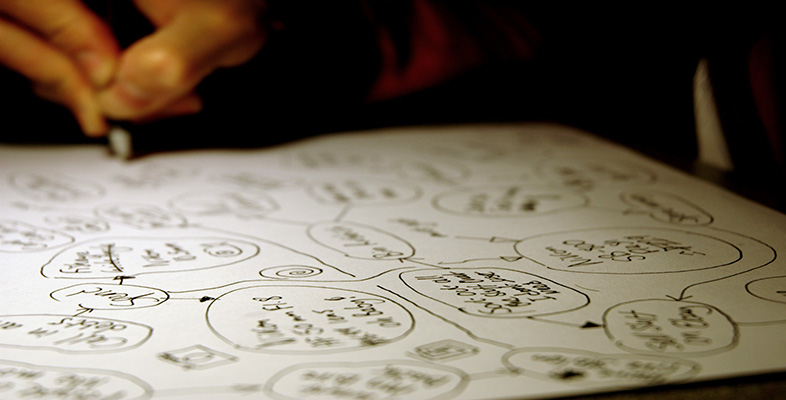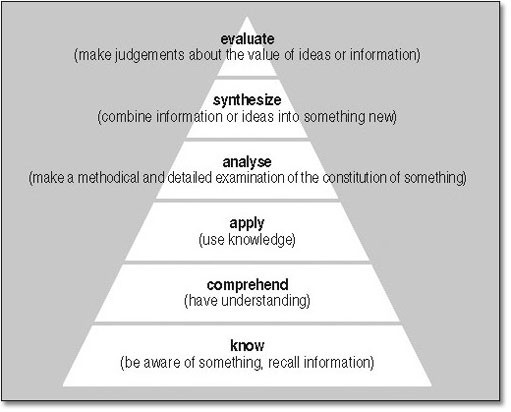3.1 Thinking in a higher gear
While we can all think, it is important to recognize that the thinking skills we have looked at so far are not all required or equally valued in academic work. Common to all subjects and levels is the concept of higher and lower order thinking skills. Higher order skills are considered to be more complex than lower order skills. The triangle model (Figure 1) provides a useful way to visualise the relationships between some of the key intellectual skills valued in education. The complexity of the skills increases from the base to the top of the triangle.
Although the skills in Figure 1 are arranged in a hierarchical way, they are all important. Much of the thinking we do involves a mixture of skills at different levels. We develop and use them simultaneously, for example, when we are solving problems and analysing case studies. One of the key aims of education is to extend and develop higher order thinking skills - to develop thinking at a qualitatively higher level, to move into a higher gear.
When you are studying, it can be helpful to recognise the words people use to describe thinking at these different levels.
Activity 4
Try making a list of verbs that might describe or demonstrate thinking at each level of the triangle shown in Figure 1.
Discussion
Here are some examples.
| Evaluate | judge, appraise, choose, rate, assess, estimate, value, measure, criticise |
| Synthesise | formulate, teach, design, develop, re-define, propose, create |
| Analyse | distinguish, differentiate, calculate, debate, relate, compare, experiment, contrast, examine |
| Apply | demonstrate, schedule, operate, sketch, employ, use, practice |
| Comprehend | restate, identify, discuss, locate, recognise, review, explain, tell, clarify |
| Know | recall, define, state, list, repeat, name, recount, present, find |

